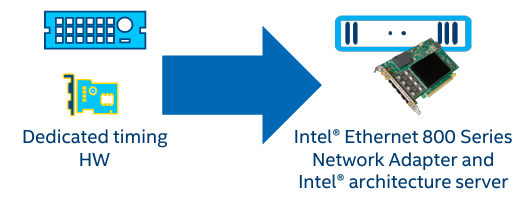In order to meet the 5G network timing requirements, there is a significant challenge. The challenge is 5G performance requirements driving precise timing needs from cloud to edge. The legacy proprietary solutions rely on high-cost, purpose-built appliances, and specialized network interface cards.
5G deployments demand high timing synchronization across the network and affordable infrastructure costs. So Insufficient timing accuracy can lead to service disruptions –dropped calls, less accurate location services, and loss of advanced network capabilities. Accurate and reliable synchronization has long been a fundamental prerequisite for the correct operation of telecommunications networks. Its importance has grown in 4G, and it will be more important than ever in 5G and future networks.
Synchronization Types in 5G Network
New network architectures imply new approaches to addressing the various synchronization needs. This includes using Precision Time Protocol (PTP) and radio interface-based methods to synchronize distributed radio units in the evolved RAN architecture, where the upper and lower parts of the 5G New Radio (NR) RAN are separated in the different logical units: the centralized unit (CU), the distributed unit (DU) and the radio unit (RU). The baseband function in a base station is split into two logical units: a CU hosting the higher-layer protocols and a DU handling the lower layers of the user equipment (UE).
Most 5G RAN deployments use 1588 PTP, SyncE, or both to ensure required timing synchronization.
- Synchronous Ethernet (SyncE) delivers frequency synchronization over Ethernet between SyncEenabled devices. Extends traditional telecom timing architecture to commercial-off-the-shelf (COTS) Ethernet solutions.
- IEEE 1588 PTP enables the synchronization of systems on a network through the transfer of timing data (including frequency, phase, and time of day) with hardware timestamping in PTP packets.
Intel Ethernet 800 Series Network Adapter
One of the examples solutions that meet 5G Network Timing Requirements is Intel Ethernet 800 Series Network Adapter which supports hardware-enhanced IEEE 1588 PTP and SyncE and IA servers deliver high-accuracy network synchronization in contrast to the Dedicated timing HW that is used in the legacy proprietary solutions which relies on high-cost, purpose-built appliances, and specialized network interface cards.

Intel Ethernet 800 Series NIC solution, formerly known as Westport Channel, delivers a Hardware-Enhanced Precision Time Protocol (PTP) and SyncE Ethernet NIC in standard servers. These Intel Ethernet NICs offer precision timing across an entire network at a cost-effective price point for 5G infrastructure scale-out. This helps in reducing solution cost versus the legacy hardware appliance and specialized NIC approach. This approach can also be used in other markets such as industrial, financial, energy, and many more.
This is a PCIe Gen 4.0 quad-port adapter with a maximum throughput of 100Gb and a maximum speed of 25Gb per port. This adapter has five hardware enhancements, which include an oven-controlled external oscillator that enables precise timing accuracy, and up to four hours of holdover time if the source timing signal is lost.
Intel Ethernet 800 Series Network Adapter Types
All 800 Series adapters support IEEE 1588 PTP. However, only Westport Channel and Logan Beach support features like SyncE. Also, an oven-controlled external oscillator for tighter accuracy and extended holdover time, and comes with an option of a GNSS module. These cards are best for deployments requiring high timing accuracy. Both these adapters, Westport Channel and Logan Beach, have support for a boundary clock implementation, which has the ability to adjust one pulse-per-second signal (1PPS signal) to a master timing source.

